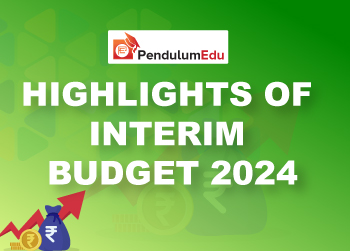Topic: RBI
1. The share of public sector banks in total credit decreased from 57% a year ago to 56.1% in September 2022.
- On the other hand, the share of private sector banks in total credit increased from 37.5% a year ago to 38.4% in September 2022 according to Reserve Bank of India.
- The share of private sector banks in total credit was 29.6% five years ago. The share of public sector banks in total credit was 65.6% five years ago.
- According to RBI’s Quarterly Basic Statistical Returns (BSR), bank credit growth (y-o-y basis) increased to 18% in September 2022 compared with 14% a quarter ago and 5.8% a year ago.
- Personal loans accounted for one third of the total incremental credit during last one year.
- Individuals’ share in total credit reached an all-time high level of 44.4% in September 2022.
- RBI said female borrowers accounted for 22.6% of individuals’ borrowings.
- Annual growth in working capital loans by banks stood at 16.5% (y-o-y) in September 2022.
- As per RBI, the overall weighted average lending rate on outstanding credit increased by 33 basis points in the quarter ended September 2022.
Topic: RBI
2. RBI said that the fraud reporting module-CPFIR will be migrated to DAKSH from January 01, 2023.
- RBI said Central Payments Fraud Information Registry (CPFIR) for reporting payment frauds by scheduled commercial banks and non-bank Prepaid Payment Instrument (PPI) issuers will be migrated to DAKSH.
- DAKSH is RBI’s Advanced Supervisory Monitoring System.
- As per RBI, this will enhance efficiency, streamline reporting and automate the payments fraud management process.
- Entities shall begin reporting of payment frauds in DAKSH from January 1, 2023.
- RBI had operationalised the Central Payments Fraud Information Registry (CPFIR) in March 2020.


Topic: Indian Economy/Financial Market
3. India Inc’s overseas direct investment in November 2022 was the second highest monthly ODI in this financial year.
- India Inc’s overseas direct investment (ODI) in November 2022 stood at about $3 billion.
- The highest ODI in FY23 so far was recorded in April at $3.584 billion.
- The lowest ODI in FY23 so far was recorded in May at $803.32 million.
- India Inc’s ODI in the first eight months of FY23 stood at $14.291 billion.
- This is 40% lower as compared to $23.660 billion of year ago period.
- According to RBI, overseas direct investment (ODI) includes following.
- Acquisition of any unlisted equity capital or subscription as a part of the Memorandum of Association of a foreign entity
- Investment in 10% or more of the paid-up equity capital of a listed foreign entity
- Investment with control where investment is less than 10% of the paid-up equity capital of a listed foreign entity
- India Inc is a term that refers to the formal sector of nation.
Topic: Infrastructure and Energy
4. Highest-ever annual new capacity addition in 2022 recorded in solar power segment.
- As of November 30, 2022, the total installed capacity of the solar segment was 61,966 MW. It was 49,357 MW as of December 31, 2021.
- In January-November 2022, solar power sector added a new capacity of 12.6 GW.
- In 2021, new capacity addition was 11.9 GW. This was previous highest annual capacity addition.
- Rajasthan is the top state in terms of total installed solar capacity at 15.6 GW.
- It is followed by Gujarat (8.4 GW), Karnataka (7.9 GW) and Tamil Nadu (6.3 GW).
- As of November 30, 2022, the total grid-connected renewable power capacity in India was at 119,512 MW.
- This included 62 GW of solar power, 42 GW of wind power, 4.9 GW of small hydro and about 10.2 GW of biopower.
- The centre has fixed a target of achieving 500 GW of installed capacity from non-fossil fuels by 2030.
Topic: Indian Economy/Financial Market
5. Credit information company TransUnion Cibil launched a ranking system for MSME borrowers.
- The 'FIT Rank' has been launched by TransUnion Cibil in association with Online PSB Loans and SIDBI.
- The 'FIT Rank' will rate the over 6 crore micro, small and medium enterprises (MSMEs).
- It will rate them by drawing inputs from their current accounts, income tax returns and also Goods and Service Tax (GST) returns.
- Based on these inputs, it will arrive at a score of 1-10 to rate a borrower.
- The ranking will provide lenders an idea about the capacity of an enterprise to pay, its creditworthiness and also intention to pay from past experience.
- The ranking model utilizes machine learning algorithms and predicts the probability of an MSME becoming a non-performing asset (NPA) in the next 12 months.
- FIT Rank 1 is for the least risky MSME and FIT Rank 10 is for the most at-risk MSME. Each FIT rank corresponds to a Probability of Default (PD).
Topic: Banking System
6. Domestic rating agency ICRA revised banking sector outlook to positive.
- It has revised banking sector outlook to positive on the basis of improving asset quality, healthy asset growth and stronger capital buffers.
- It expects asset quality to improve to a decadal best of 4% from a gross NPAs (non-performing assets) perspective by the end of FY24.
- As per the rating agency, credit growth of the banking system will decrease to 11-11.6% in FY24 after growth of 15.2-16.1% expected in FY23.
- It said bulk of credit growth will be led by state-owned lenders and market share gains for private sector lenders will reduce.
- The agency estimated public sector lenders will record a credit growth of 13.4-14.1% in FY23 and 9.5-10.1% in FY24.
- The banking system’s GNPAs (Gross Non-Performing Assets) will reduce to 4% and net NPAs will be under 1%.
- The banking system’s GNPAs were at 6% in FY22, while the net NPAs were at 1.7%.
- The agency expects the core tier-I buffers to be at 13.8-14.1% in FY23 in comparison to 14.3% in FY22.
- The agency said that net interest margins made by banks will narrow down in FY24 on the deposit rate hikes.
- According to the agency, next two years will be opportune time for a transition to the IND-AS system of accounting. It said one or two banks can be classified as systemically important.
- ICRA Limited was set up in 1991. The international Credit Rating Agency Moody’s Investors Service is ICRA’s largest shareholder. Ramnath Krishnan is CEO of ICRA.
Topic: Reports and Indices
7. India will become the third-largest economy by 2035 according to the Centre for Economics and Business Research (CEBR).
- In its World Economic League Table, the CEBR said that over the next five years, India's annual GDP growth rate will average 6.4%.
- Growth will average 6.5% in the subsequent nine years according to CEBR, a British consultancy.
- CEBR also said that by 2037, the world’s gross domestic product will be doubled.
- East Asia and the Pacific region will account for over a third of global output by 2037. Europe’s share shrinks to less than a fifth of global output by 2037.
- CEBR said the global economy will face a recession in 2023 mainly due to an increase in interest rates by the central banks to prevent higher inflation.
- In its annual World Economic League Table, CEBR said the global economy surpassed 100 trillion Dollars for the first time in 2022. It said the global economy will stall in 2023.
- World Economic League Table presents forecasts for 191 countries till 2037. It tracks macroeconomic developments globally and country-wise.
Topic: RBI
8. RBI’s amended bank locker rules will take effect from 1st January 2023.
- RBI has asked banks in India to renew their locker agreements with existing locker customers by 1st January.
- All the existing locker customers must furnish proof of eligibility for a renewed locker arrangement.
- RBI has advised the banks to install CCTV camera at entry and exit points of the strong room and the common areas of operation.
- As per RBI, the recording of CCTV camera shall be preserved for a period of not less than 180 days.
- RBI has also asked the banks to make sure that any “unfair terms or conditions” are not covered in their locker agreements.
- As per the guidelines, the banks are required to preserve the CCTV recording till the police investigation is completed and till the dispute is settled if any customer has complained that his or her locker is opened without his or her knowledge and authority.
- As per the guidelines, this provision of preserving CCTV recording also applies if any theft or security breach is noticed.
- If the valuables stored in the vaults are ransacked or lost due to fire or building collapse, depositors can now get up to 100 times the bank charges.
- However, the bank is not responsible for any loss or damage to the locker's contents resulting from natural disasters or other "Acts of God."
Topic: Indian Economy/Financial Market
9. NSE to set up Social Stock Exchange for social organisations.
- SEBI has approved NSE for establishing Social Stock Exchange as a separate segment.
- Social Stock Exchange was proposed by Nirmala Sitharaman in the Union Budget for 2019-20. SEBI had notified the framework for SSE in July.
- With the help of this exchange, social organizations can raise capital through equity or debt instruments.
- It will help social organizations to contribute to sustainable development goals.
- In October, BSE received the approval for setting up a Social Stock Exchange.
- Under the Securities Contracts Regulations Act, the government has announced a new security called “zero coupon zero principal” for the fundraising of non-for-profit-organisations.
- This instrument can be issued by organizations to raise funds publicly or privately.
- At present, the minimum issue size is Rs 1 crore and the minimum application size for subscription is Rs 2 lakh.
- NPOs and for-profit social enterprises are the social enterprises eligible to participate in the Social Stock Exchange.
- Social enterprises must be involved in one of the 16 general activities that the regulator has defined.
- Corporate foundations, political or religious organisations or activities, and professional or trade associations will be not identified as social enterprises and are not eligible for SSE.
- Many countries including Brazil, Portugal, South Africa, the UK, Canada and Singapore already have established Social Stock Exchanges.


 Previous
Previous 
 Latest
Latest 








Comments